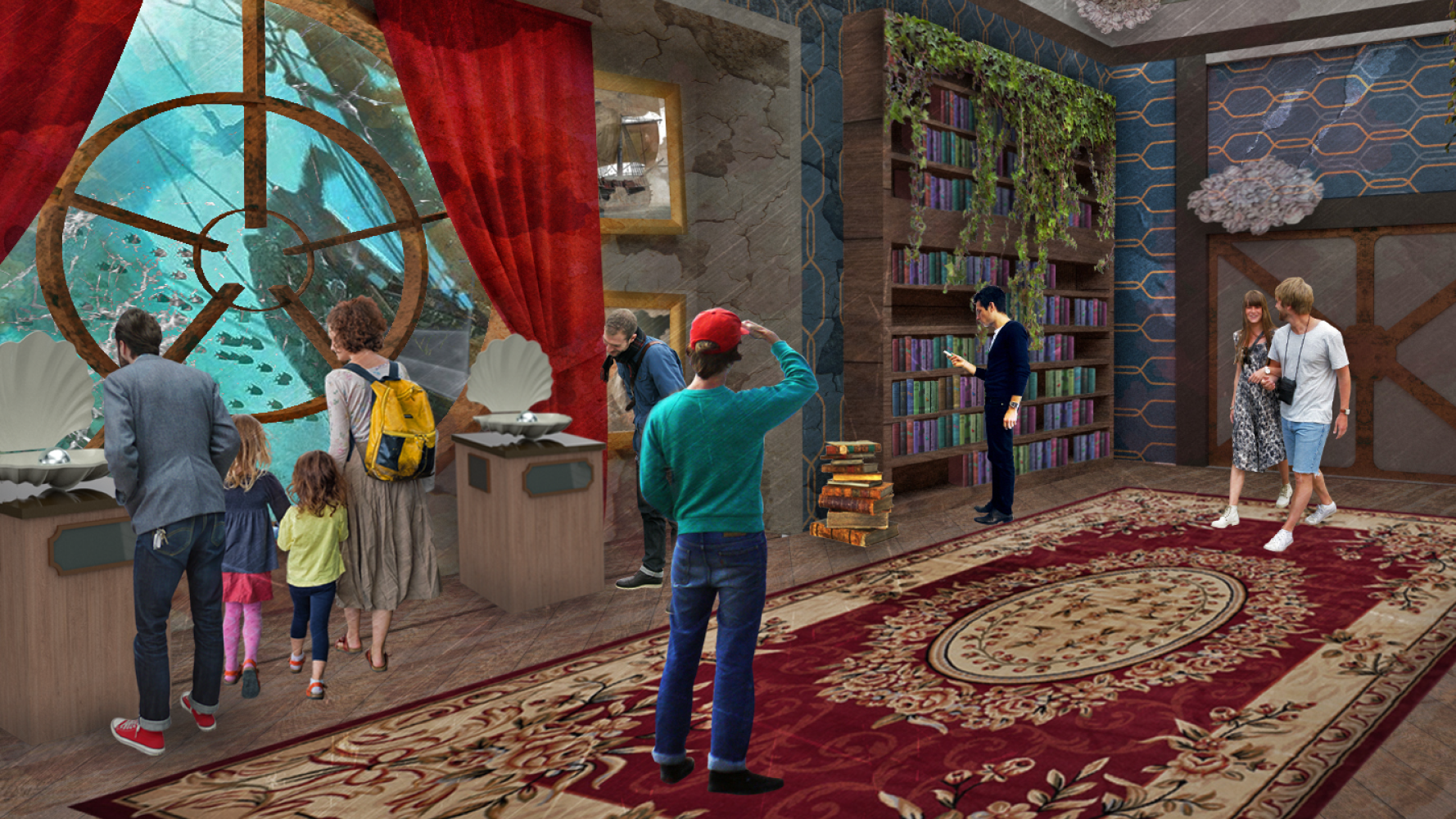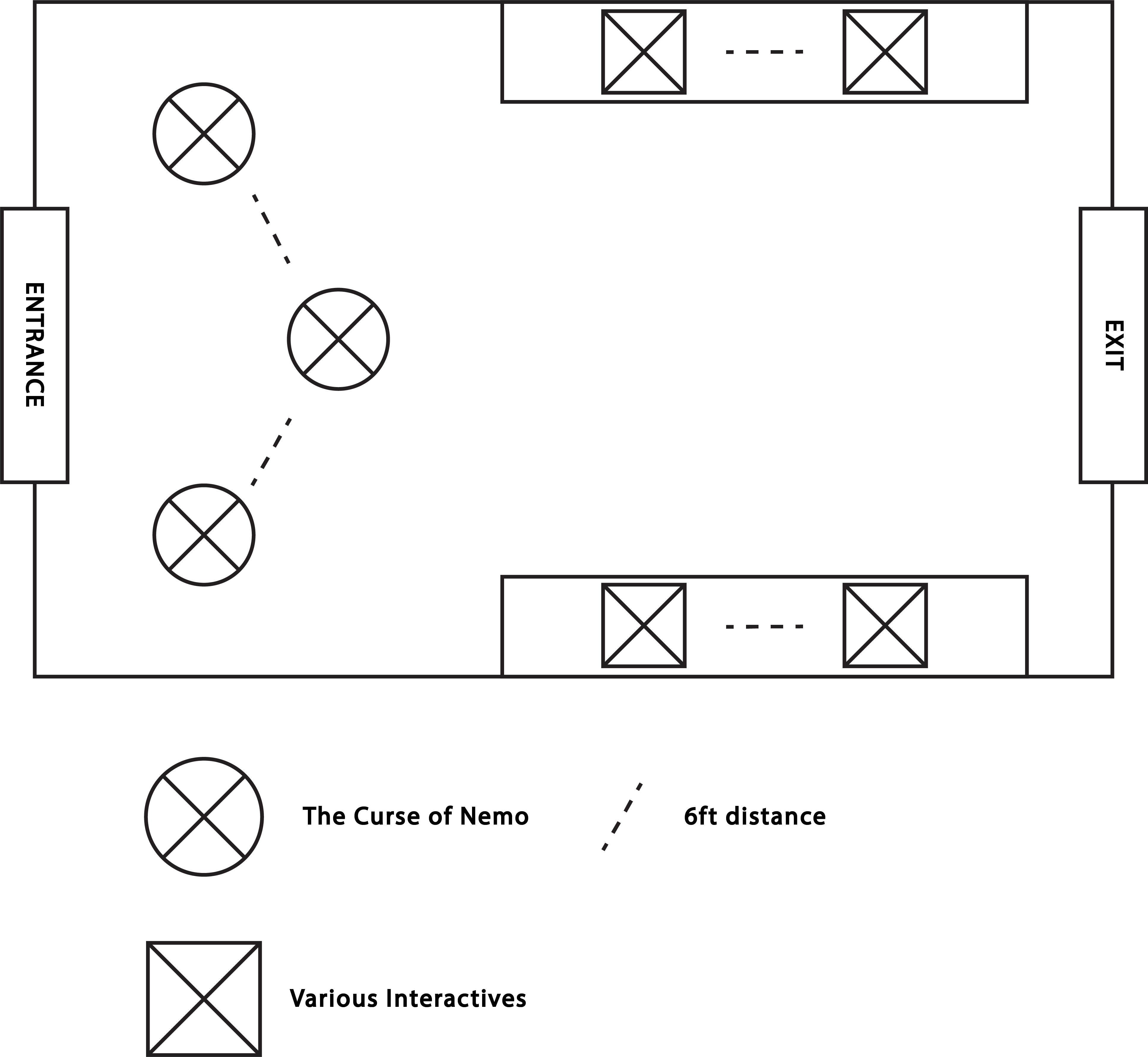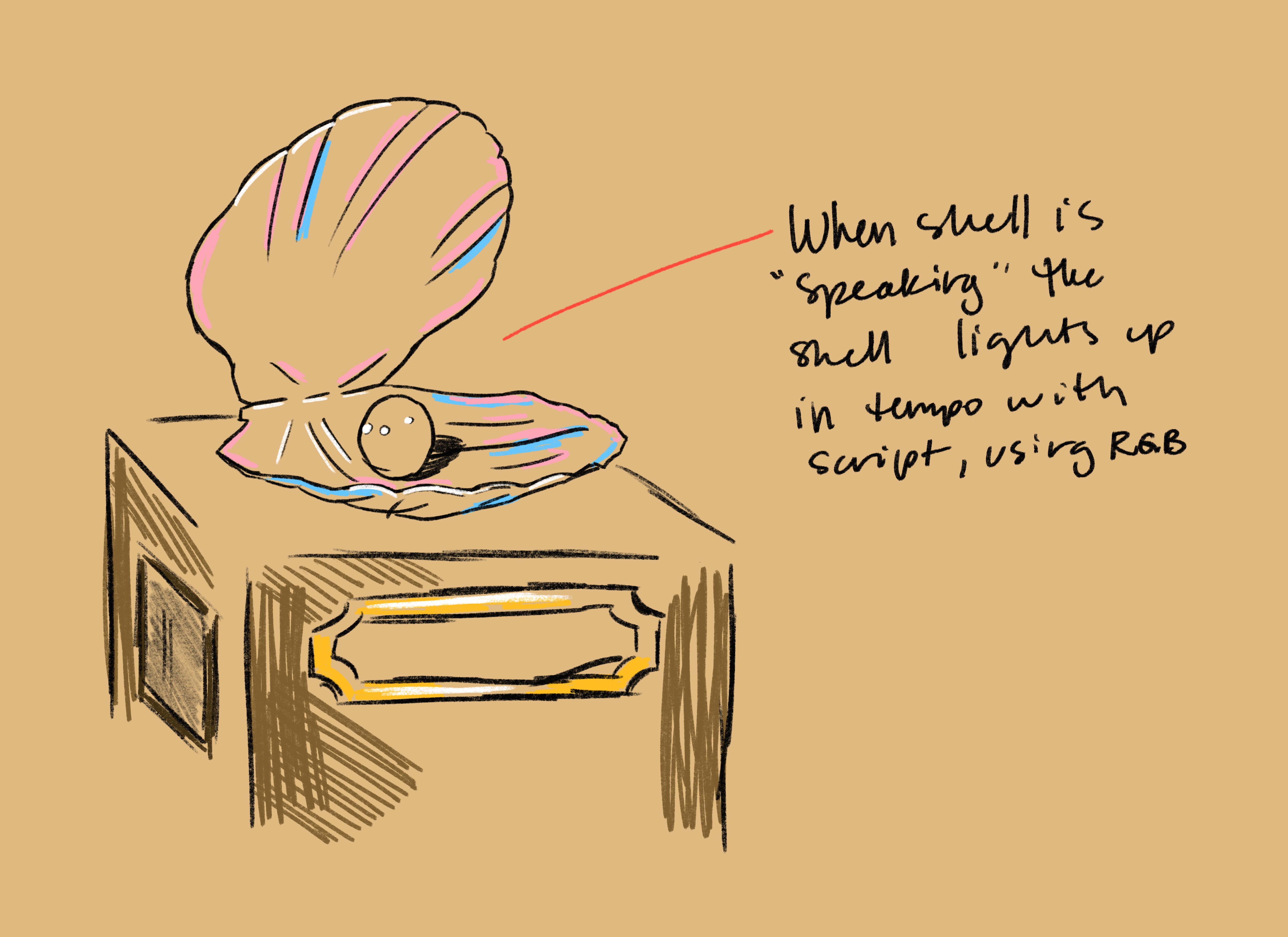Within my Master's thesis I really wanted to challenge myself and embrace brand new skills that I had never worked with before. When approaching the Master of Digital Media program at Ryerson University, I knew I would be surrounded with a plethora of resources from 3D printing and physical computing, to the wealth of knowledge and guidance from faculty.
I wanted to think outside of the 2D world I had become accustomed to and dive deeper into tangible interactive experiences that help immerse us even further into our favourite stories.
In the spring semester, for a group project, my classmates and I created Discover Atlantis, a single seated attraction based off of 20,000 Leagues Under the Sea. Within this project, I worked on story development, operations guidelines, and interactivity within the queue which lead me to further my research within my final major research project.
Upon the rise of COVID-19 in the summer of 2020, I had to pivot my project and final deliverables drastically. As campus closed and classes became completely virtual, I no longer had the resources in our labs and shops. Though, despite all this, my research became even more relevant to an industry that I am so passionate about. Theme parks around the world had to shut down their doors and rethink the strategy of safely caring for their guests. I chose to take advantage of this global pandemic and utilize my research and technology to figure out a beneficial solution to navigating immersive experiences in a pandemic-stricken world. Posing my research around the question; Are there digital technologies that could promote physical distancing while maintaining or enhancing interaction, immersion, and engagement?
To manage the scope of the short year I was in the program, I chose to focus solely on queue design. Queues are an integral part of any theme park. They assist with guest flow and crowd mitigation. Unfortunately, they also are prone to guests and employees being in close quarters. These spaces are an optimal opportunity to introduce new tactics and technology to enhance safety measures in regards to social distancing.
Conceptual Application

Discover Atlantis is a hypothetical ride themed around the story of 20,000 Leagues Under the Sea. Within the queue there are various activities for guests to experience, to keep them preoccupied during their wait. For this research, The Curse of Nemo, an interactive prototype was created to showcase how touchless technology can encourage social distancing guidelines within a queue, while also keeping guests immersed in the narrative of an attraction.

As guests are grouped within the queue, each will be assigned to a different plinth. Using Arduino and Ultrasonic Sensor technology, the sensor will start identifying the motion and distance of the guests moving forward. These will cue various reactions assigned to the different motions until the guests are less than two feet in front of the plinth. To ensure, many of the senses are being stimulated, the reactions will appear through an LCD screen on the plinth, make sound in the speakers, and the “shell”, itself, will use visual cues through RGB light.


Once the guests are within two feet of the plinth, the “shell” will begin storytelling and give more context to the attraction and interactive queue space. A key feature within this interaction is that once guests are within the two foot distance in front of the sensor, if they move out of that proximity the “shell” will react negatively, encouraging them to stay in the designated space.
Relying on storytelling and immersive narrative, this interaction will keep the guests entertained and six feet apart from other groups. It will also help with operations and throughput as the Curse of Nemo will be the start of the guests’ interactive adventure, leading them to the next activity found throughout the room. Due to time and resource constraints, more interactive elements, unfortunately could not be fully fleshed out.
Conclusion

Although the Curse of Nemo is specifically themed to the Discover Atlantis attraction, the technology and principal of the interactive activity can be applied to various areas of a theme park. The Curse of Nemo, and interactive applications similar, have the ability to enhance the guest experience at theme parks for a post-pandemic world. It is an example of how touchless, interactive, narrative-driven elements can, not only encourage play and immersive activity for guest enjoyment, but also address the challenges of operating a theme park during the middle of a pandemic and thereafter. Even after a vaccine has been implemented and numbers of those affected by COVID-19 start to decline, there is no telling how people will respond to the “new normal”. Creating new forms of immersive experiences will be the key to moving forward within theme parks. Touchless storytelling is just the beginning for themed entertainment and embracing life at six feet apart.
If you would like to read my entire Master's thesis or discuss the project, please email me at emily.bh.le@gmail.com